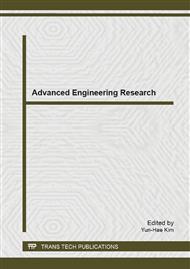p.1424
p.1428
p.1433
p.1438
p.1443
p.1448
p.1452
p.1456
p.1460
Comparisons of Two Methods for Regional Dividing Technology of Liquefaction Based on ArcGIS
Abstract:
Quantitative characterization of liquefaction degree in the south region of Tangshan city has been done by methods of code evaluation and multi-factor regression evaluation. By use of those criterition, liquefaction degree maps were prpared through collecting totally 65 boreholes, and compiling drilling graphics database and attribute database on ArcGIS. In this procedure, the potential of liquefaction values were given respectively. While the quality and quantity of geotechnical test data directly affact the statistical accuracy with which area can be characterized, different method affact it more considerable. According to these drilling data, liquefaction condition for each borehole was discriminated, and the liquefaction condition of the unknown area was speculated by Kriging interpolation method, then the liquefaction zoning map of south of Tangshan and its southern region is presented based on ArcGIS, and comparisons have been made for the two methods.
Info:
Periodical:
Pages:
1443-1447
Citation:
Online since:
April 2014
Authors:
Price:
Сopyright:
© 2014 Trans Tech Publications Ltd. All Rights Reserved
Share:
Citation:


